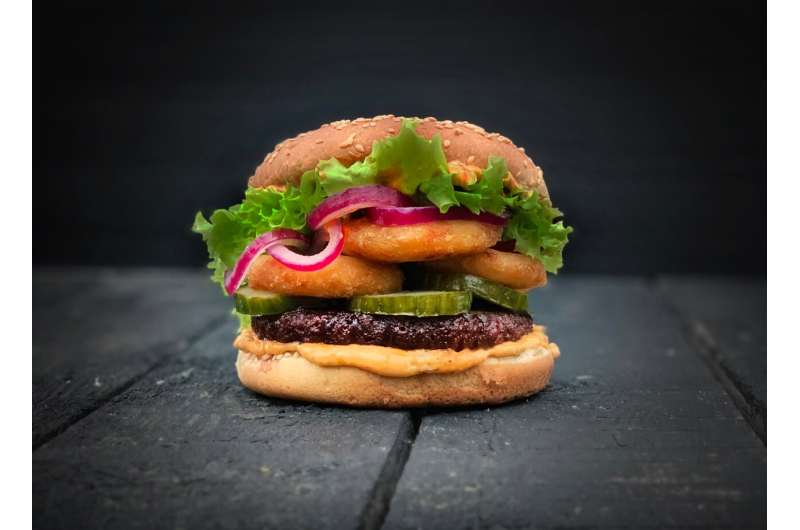
When Willa’s Oat Milk launched five years ago, the plant-based market was rapidly expanding, attracting unprecedented attention and money.
But the Minnesota-based brand took a different approach. As investors flooded the sector with cash and high expectations that would be difficult to meet, Willa’s continued on its slow-growth path.
Many small brands have since flamed out. Several of the nation’s leading plant-based companies are stumbling, creating an image problem for the entire industry—that plant-based has peaked. Willa’s, however, is not only still standing, but steadily succeeding.
“We keep making delicious products that people want to buy,” Willa’s co-founder Christina Dorr Drake said. “We’re filling the gaps between what is being offered and what people are looking for.”
Plant-based grew to an $8 billion industry in 2022, and while the double-digit growth years appear to be over, plant-based sales continue to increase faster than food sales overall.
Experts say that while plant-based has not peaked, it is certainly evolving as consumers demand more than alternatives to meat and dairy. They want good-tasting food at a good price across many occasions—not just as a novelty.
“Plant-based foods, overall, should benefit from more flexitarian eating behaviors among consumers,” Billy Roberts, a food and beverage economist at CoBank, wrote this year. “Broadening the appeal of plant-based options, however, will require brands to overcome lingering negative perceptions, particularly of taste, value and versatility.”
About 25 million Americans eat plant-based options at least occasionally, according to Circana, a Chicago-based market research firm. But meat alternatives are especially seeing a dropoff in repeat buyers as price, taste and texture remain an issue.
“Many interested consumers have experienced plant-based products, and the novelty is likely gone,” Roberts wrote. “Early exponential growth seen in the category may have led some brands to unrealistic expectations about how many consumers would permanently convert even a portion of their diet to plant-based items.”
The need to evolve
An unlikely consensus was forged on a stage in St. Paul this month as a plant-based advocate and a Cargill beef representative agreed that the food system has to change to sustainably feed the world.
Priera Panescu, lead scientist at the alternative protein nonprofit Good Food Institute, argued that plant-based protein is a far more efficient use of resources than animals and is necessary to reduce greenhouse gas emissions.
“In order to reach climate goals, we’ll need at least a 50% shift in animal agriculture to plant proteins, alternative proteins or more sustainable animal protein cultivation,” she said.
“But if consumers don’t want that, it’s still not going to help,” said Jeff Fitzpatrick, sustainability lead for Cargill’s BeefUp initiative. “Because they’re not buying a scientific study, they’re buying what they want to feed their family that night for dinner.”
Despite greater acceptance of plant-based alternatives in recent years, meat consumption continues to rise worldwide as populations grow and become wealthier.
“It just is what it is, so how do we do that in the most responsible way?” Fitzpatrick asked. “It’s going to be a balance. It’s going to be driven by what consumers want.
“We’re not anti any protein at Cargill. We’ve got it all.”
Plant-based options have long been embraced by consumers shopping their values and choosing products with lower environmental impacts. But that audience is limited, and last year the market share of plant-based food remained unchanged from 2021.
Opening the category to everyday shoppers looking for a quick, affordable meal is the only way to ensure it continues to grow and positively impact the planet, Panescu said.
“Plant-based meats are at a premium right now,” Panescu said. “It’s really difficult for that to be ‘for the masses’ if people just can’t afford to get it.”
Lower prices would make Nic Berkeland’s job easier. The senior meat and seafood buyer for Target Corp. said consumers are making fast decisions and meat and plant-based companies must educate their audience before they get to the store.
“When someone’s walking through a Target with a 2-year-old screaming, they’re not going to sit there and look at a big long paragraph about why they should buy an alternative protein or why this company’s great or what they’re doing with regenerative agriculture,” Berkeland said.
The future protein supply is a balance of animals and plants and not 100% of either, he said.
Leading with taste
Food is a fairly easy businesses to start—everyone eats—but one of the hardest to succeed in as profits are tight, if made at all.
“There’s nothing more cold and ruthless than the retail shelf,” said Jake Achterhoff, executive director of Minnesota-based egg alternative AcreMade. “Conventional packaged foods had a 100-year head start on us. We’ve got a lot of ground to cover in a short time.”
The brand has quickly learned that simply being plant-based can no longer ensure success as the market gets crowded and consumers get choosy.
“It might be the third or fourth thing I even share about the product,” Achterhoff said. “We’re leading with taste, convenience, protein and nutrition.”
Owned by pea protein supplier Puris, AcreMade debuted last year and recently introduced scramble cups to add extra convenience to the powdered egg replacer.
“If you can’t reach that everyday shopper at least once in a while, it’s a tough proposition,” Achterhoff said. “So for us, it’s about figuring out how to fit in everyday occasions.”
Another Minnesota-based brand, Wicked Kitchen, is coming to Target shelves after several years growing at national grocery chains in the U.S. and the U.K.
As the company bought a plant-based fish company this spring, CEO Pete Speranza said consolidation is inevitable as the industry’s winners and losers are sorted out.
“It’s now in a phase of investor expectations outstripping consumer adoption,” Speranza said, as brands like Impossible and Beyond fail to sustain their massive early growth.
Brands that can make it to next summer have the best chance of surviving long-term, he said. The race to get there will be a bit chaotic, with some companies folding or rethinking ambitions while others charge ahead.
“It’s time to treat these more like food companies and less like tech. They probably should have been treated like that from the beginning.”
Room for everyone
Willa’s checks a lot of boxes that, surveys show, consumers are looking for—from a short ingredient list to high protein content. And the origin story—the women-owned brand is named after the founders’ grandmother, and Drake beat cancer while standing up the company—make the brand endearing, something surveys show consumers like.
“We often talk about how we did not start Willa’s to just be a less-bad alternative to dairy, but to have a net-positive impact on people and the planet,” Drake said.
None of that would matter if shoppers didn’t like the taste and buy it again, however, especially with Willa’s higher prices.
“The No. 1 reason people buy Willa’s is the taste,” Drake said. “People are open to spending more because of the taste, and we’re hearing from buyers Willa’s is category-expanding.”
Meaning: New consumers are trying plant-based milk beyond the 50% of Americans who already bring some home at least once a year.
“We continue to see increased demand for plant-based milk, and look forward to providing our customers with another great option,” said Charles Butler, center store category manager at Lunds & Byerlys, which recently started selling Willa’s.
“It’s really easy to say, “Oh, wow, there are so many new entrants,” but we didn’t have many options five or 10 years ago,” Drake said. “You were lucky if the coffee shop had any options.”
2023 StarTribune. Distributed by Tribune Content Agency, LLC.
Source: Read Full Article
